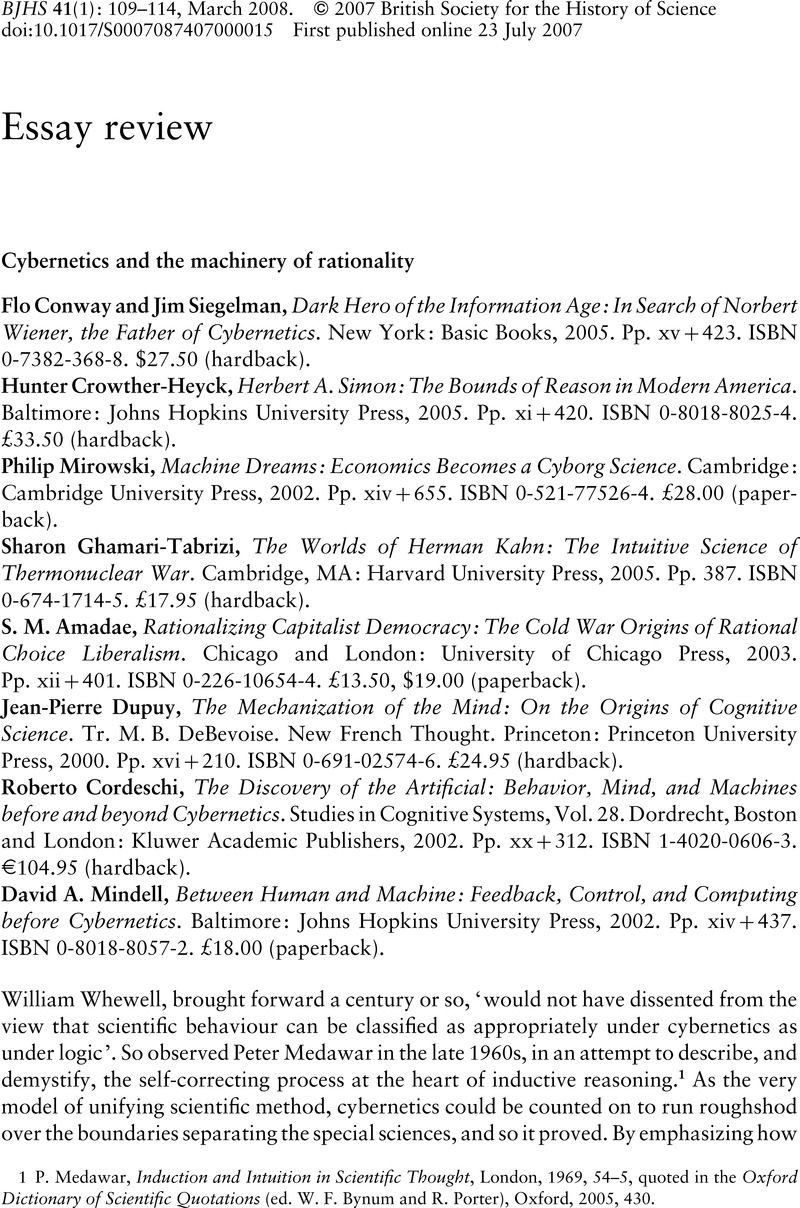Article contents
Cybernetics and the machinery of rationality
Published online by Cambridge University Press: 23 July 2007
Abstract

- Type
- Essay Review
- Information
- Copyright
- Copyright © British Society for the History of Science 2007
References
1 P. Medawar, Induction and Intuition in Scientific Thought, London, 1969, 54–5, quoted in the Oxford Dictionary of Scientific Quotations (ed. W. F. Bynum and R. Porter), Oxford, 2005, 430.
2 For instances of disciplinary development of biology in the context of cybernetics and computer technology see Kay, L. E., ‘Who wrote the book of life? Information and the transformation of molecular biology, 1945–55’, Science in Context (1995), 8, 609–34CrossRefGoogle ScholarPubMed; E. F. Keller, ‘Synthetic biology redux – computer simulation and artificial life’, in idem, Making Sense of Life: Explaining Biological Developments with Models, Metaphors, and Machines, Cambridge and London, 2002, 265–94; Haraway, D., ‘The high cost of information in post-World War II evolutionary biology: ergonomics, semiotics, and the sociobiology of communication systems’, Philosophical Forum (1981–2), 13, 244–78Google Scholar.
3 For details see P. R. Masani, Norbert Wiener, 1894–1964, Basel and Boston, 1990.
4 Rosenbluth, A., Wiener, N. and Bigelow, J., ‘Behavior, purpose and teleology’, Philosophy of Science (1943), 10, 18–24CrossRefGoogle Scholar.
5 For examples of this perspective in psychology see Moore, O. K. and Lewis, D. J., ‘Purpose and learning theory’, Psychological Review (1953), 60, 149–56CrossRefGoogle ScholarPubMed; G. A. Miller, E. Galanter and K. H. Pribram, Plans and the Structure of Behavior, New York, 1960.
6 See S. J. Heims, The Cybernetics Group, Cambridge, MA, 1991.
- 4
- Cited by


